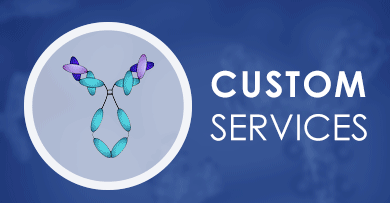+ Filter
 Loading...
Loading...

FcγRI & CD33
 Loading...
Loading...Anti-FcγRI & CD33 ProductsBackground
Anti-FcγRI & CD33 Products
- Anti-CD33 immunotoxin (scFv)-PE (AGTO-G008E)
-
- Species Reactivity: Human
- Application: Cytotoxicity assay, Function study
- Anti-CD33 immunotoxin (scFv)-Gel (AGTO-G008G)
-
- Species Reactivity: Human
- Application: Cytotoxicity assay, Function study
- anti-CD33 immunotoxin M195 (IgG)-PE (AGTO-L050E)
-
- Species Reactivity: Human
- Application: Cytotoxicity assay, Functional assay
- anti-CD33 immunotoxin M195 (IgG)-Gel (AGTO-L050G)
-
- Species Reactivity: Human
- Application: Cytotoxicity assay, Functional assay
-
- Antibody Host: Mouse
- Antibody Reactivity: Human
-
- Species Reactivity: Human
- Type: Mouse IgG1, kappa
- Application: FC
-
- Species Reactivity: Human
- Target: CD33
- Type: Tandem scFv
- Application: ELISA
-
- Species Reactivity: Human
- Type: Mouse IgG1, kappa
- Application: FC
-
- Species Reactivity: Human
- Type: Mouse IgG1, kappa
- Application: FC
-
- Species Reactivity: Human
- Type: Mouse IgG1
- Application: IHC-P, FC
-
- Species Reactivity: Human
- Target: CD33
- Host Animal: Human
- Application: ELISA, FC, Neut, Cell-uptake
- Anti-CD33 Immunohistochemistry Kit (VS-0525-XY1159)
-
- Species Reactivity: Human
- Target: CD33
- Application: IHC
- Anti-Human CD33 Immunohistochemistry Kit (VS-0525-XY1160)
-
- Species Reactivity: Human, Monkey
- Target: CD33
- Application: IHC
View More Products
Can't find the products you're looking for? Try to filter in the left sidebar.Filter By Tag
More Infomation
Our customer service representatives are available 24 hours a day, from Monday to Sunday. Contact Us
For Research Use Only. Not For Clinical Use.
Background
Putative adhesion molecule of myelomonocytic-derived cells that mediates sialic-acid dependent binding to cells. Preferentially binds to alpha-2, 6-linked sialic acid. The sialic acid recognition site may be masked by cis interactions with sialic acids on the same cell surface. In the immune response, may act as an inhibitory receptor upon ligand induced tyrosine phosphorylation by recruiting cytoplasmic phosphatase(s) via their SH2 domain(s) that block signal transduction through dephosphorylation of signaling molecules. Induces apoptosis in acute myeloid leukemia (in vitro).

This gene encodes a protein that plays an important role in the immune response. This protein is a high-affinity Fc-gamma receptor. The gene is one of three related gene family members located on chromosome 1.

